Fenced sanctuaries don’t come cheap – but they do offer a way to create areas of rich, predator free habitat for vulnerable species. But what about the habitat outside the fence?
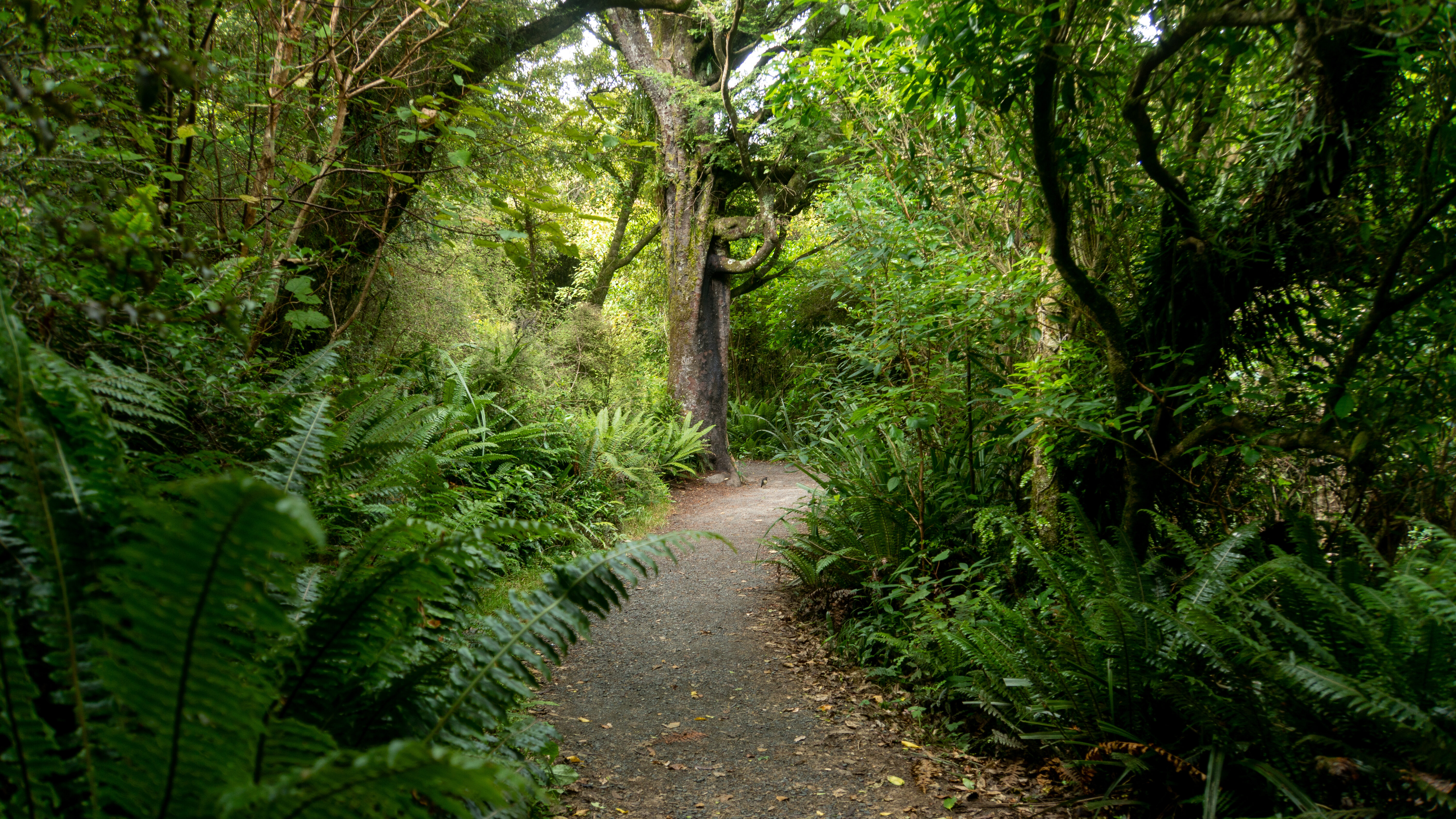
Most research to date has looked at ‘inside the fence’ habitat and bird populations, but good habitat beyond the boundary can offer extra food reserves for visiting sanctuary birds. It can also potentially be a future home for sanctuary spillover as bird populations grow and rare species move out into the wider community. So what’s on BOTH sides of the fence matters.
Olivia Burge and colleagues from Manaaki Whenua/Landcare Research have been checking out the other side of the boundary at some of New Zealand’s fenced and unfenced sanctuaries to assess the habitat and functional connectivity they offer. They report on their findings in the research journal Biological Conservation.
Most research to date has looked at ‘inside the fence’ habitat and bird populations, but good habitat beyond the boundary can offer extra food reserves for visiting sanctuary birds. It can also potentially be a future home for sanctuary spillover as bird populations grow and rare species move out into the wider community. So what’s on BOTH sides of the fence matters.
Olivia Burge and colleagues from Manaaki Whenua/Landcare Research have been checking out the other side of the boundary at some of New Zealand’s fenced and unfenced sanctuaries to assess the habitat and functional connectivity they offer. They report on their findings in the research journal Biological Conservation.
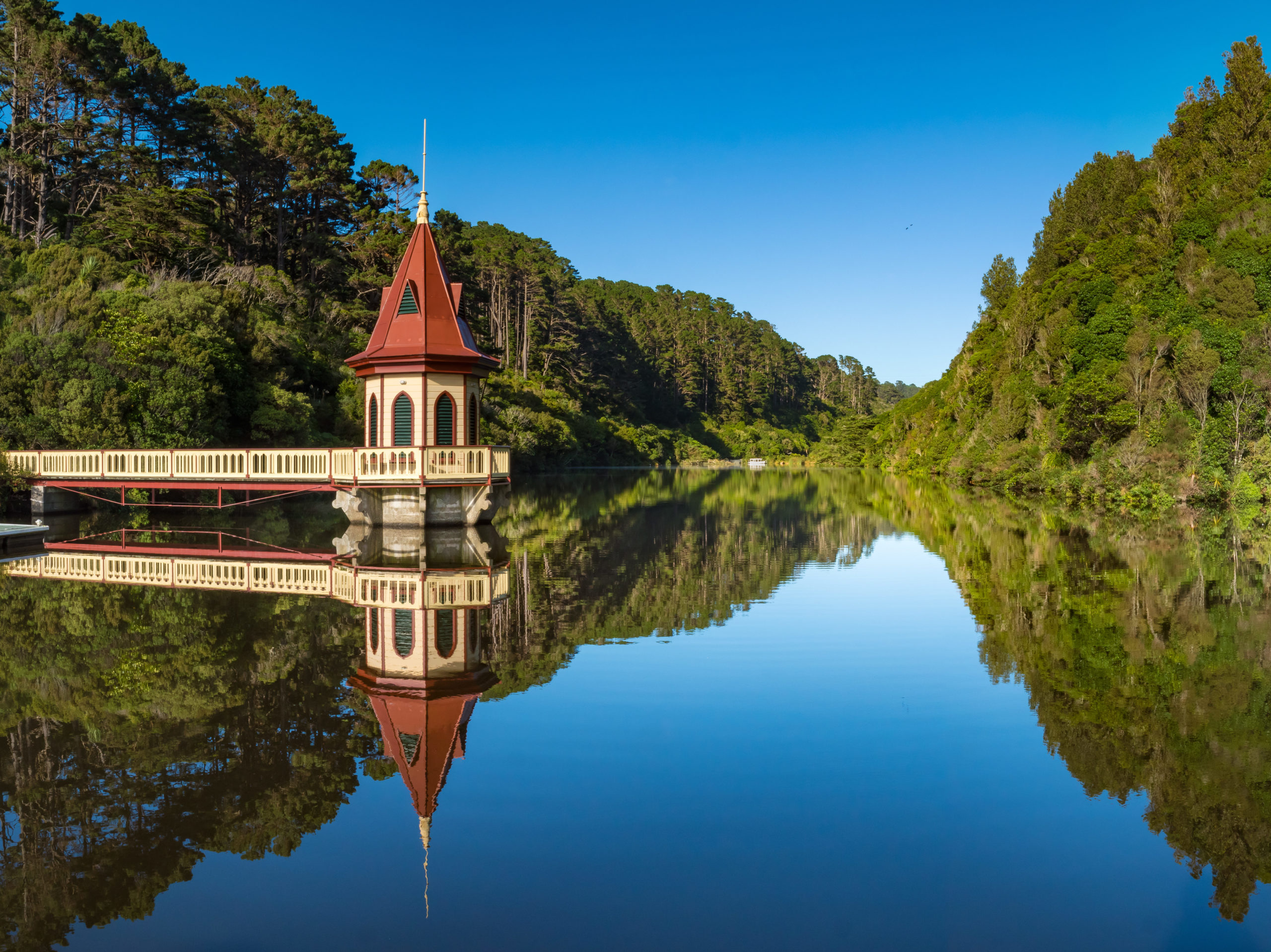
“We assessed the amount of habitat around both fenced and unfenced ecosanctuaries in New Zealand, how connected the ecosanctuaries were to the wider landscape, and the overall landscape connectivity around ecosanctuaries, for six bird species at 18 sites (15 fenced; 3 unfenced), assuming a predator-free landscape. While fenced ecosanctuaries have been promoted as ‘arks’ for highly threatened species, inadequate attention has been paid to the habitat around fenced ecosanctuaries. There is good evidence that ecosanctuary-based birds interact with the surrounding landscape. A ‘halo’ effect can be created by volant birds dispersing into areas surrounding the ecosanctuary.”
But does sufficient habitat exist around our ecosanctuaries to allow birds to disperse and establish successfully? A lack of predator-free habitat around ecosanctuaries will result in habitat traps, or sinks, say the researchers, reducing the viability of populations within ecosanctuaries through export of birds to habitat in which they will be unlikely to settle, thus making emigration exceed local recruitment and immigration.
“Fenced ecosanctuaries are at particular risk of having a lower-than average amount of habitat around them. They are often found near urban centres, associated with primarily urban-based ecosanctuary founders, and where remaining forest cover is low. Furthermore, there is a class of fenced ecosanctuary that is particularly likely to have limited connected habitat. This class of ecosanctuaries is located on peninsular sites, where only the isthmus of the peninsula is fenced and where a water body (typically the ocean) provides a barrier around the rest of ecosanctuary. Hereafter we refer to these as ‘peninsular-fenced’ ecosanctuaries, as opposed to ‘ring-fenced’ ecosanctuaries where the entirety of the ecosanctuary is fenced.”
The advantage of peninsular-fenced ecosanctuaries is that they allow a greater land area to be protected for any given length of fence, reducing the costs of fence building and maintenance. But for forest birds that don’t easily move about or disperse, the ocean barrier not only reduces the forest habitat around the sanctuary. It also makes that habitat less connected and accessible to birds within the sanctuary.
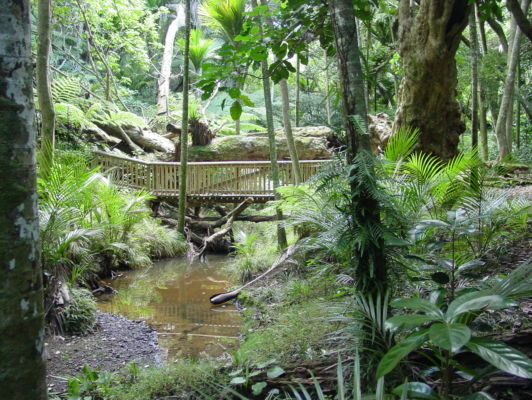
“This situation leads to a potential trade-off between maximising habitat within the fence and the amount of, and connectivity to, habitat outside the fence.”
Unfenced ecosanctuaries, with intensive predator control instead of fences, also offer an interesting comparison, say the researchers.
“These cannot provide the same near-absence of introduced predators that pest fencing achieves and require on-going predator control. However, the major cost of fenced ecosanctuaries is fence construction, maintenance, and depreciation, and these costs are absent from unfenced ecosanctuaries.”
Even while New Zealand is not yet totally predator-free, achieving a substantial reduction in predators outside ecosanctuaries could eventually mean that predation is no longer the rate-limiting step for threatened bird recovery. Having sufficient available habitat for bird recovery will be crucial.
“Habitat ‘outside the fence’ is variable and can be limited: habitat fragmentation and historical forest loss is non-uniform across New Zealand, but forest cover in 55 of 73 political districts had fallen below 30% in 2002, a proportion below which many forest species become locally extinct.”
So how do our current sanctuary surroundings stack up?
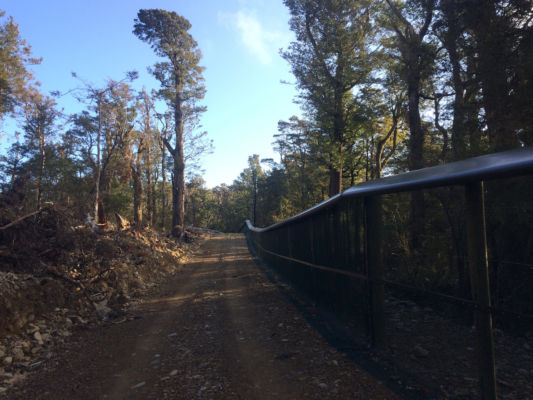
“We set out to quantify functional connectivity, which considers both the amount of habitat and how well-connected patches of habitat are to each other, taking into account the attributes of each species considered of landscapes surrounding 15 fenced ecosanctuaries and three unfenced ecosanctuaries for six bird species with different gap-crossing abilities. To sharpen focus on vegetation attributes of habitat, we assume that the landscape is free of mammalian predators, as envisioned in Predator Free 2050. We examined the amount of habitat around each ecosanctuary and whether this differed between peninsular-fenced, ring-fenced, and unfenced ecosanctuaries.”
“We hypothesised that the amount of habitat around peninsular-fenced ecosanctuaries would be less than other ecosanctuaries. We considered how well connected each ecosanctuary was to surrounding habitat patches and hypothesised that unfenced ecosanctuaries would be better connected to surrounding habitat as they commonly lie within larger areas of protected land. Finally, we ranked the patches of habitat around the ecosanctuaries in terms of their importance for landscape connectivity and assessed their land-cover.”
Six bird species were selected with a range of habitat preferences and gap-crossing abilities.
“Strongly gap-limited bird species are North Island (NI) kokakō, NI toutouwai, and NI tīeke which are unlikely to cross pasture gaps (maximum gap-crossing distances are 100, 110 and 250 m, respectively). Weakly gap-limited birds are tūī, korimako and kererū which can cross pasture or water gaps of 20, 22, and 33 km respectively. These species were chosen to be functionally representative of forest birds in New Zealand, and not all have been (or might ever be) translocated to the study sites.”
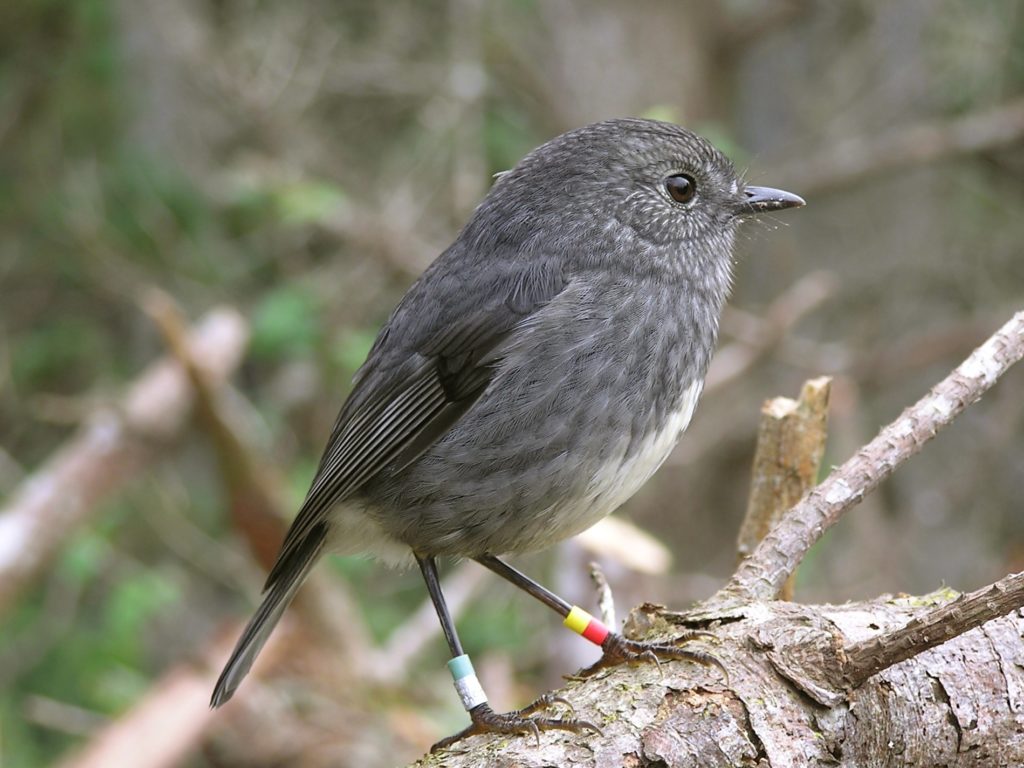
Of the 15 fenced sanctuary sites selected for this study, 7 were peninsular-fenced and 8 were ring-fenced.
“We digitised ecosanctuary boundaries or used existing data where available. We then created buffers of 1 km and 50 km around each ecosanctuary. We used the 1 km buffer for strongly gap-limited birds (maximum pasture gap-crossing 0.25 km) and the 50 km buffer for weakly gap limited birds (maximum distance 33 km).”
The study found low levels of high-quality habitat around many fenced ecosanctuaries.
“There was no high-quality habitat at all around some ecosanctuaries for several bird species. Ecosanctuaries on peninsulas (with reduced fencing costs) tended to have a smaller proportion of the surrounding area in habitat and lower functional connectivity than unfenced ecosanctuaries and ring-fenced sites; meaning the reduced fencing costs at peninsular sites needs to be balanced against less habitat, on average, beyond the ecosanctuary.”
Buffers of two sites (Riccarton Bush and Young Nicks Head) held no high-quality habitat at all outside the ecosanctuary.
“The amount of high-quality habitat around ecosanctuaries in New Zealand varied widely, and at several sites there was no high-quality habitat for strongly gap-limited bird species. In addition, there was a full range (0–100%) in connectivity between ecosanctuaries and surrounding habitat for strongly gap-limited birds, compared to 17–88% for weakly gap-limited birds. Functional connectivity patterns were relatively consistent across species despite different habitat preferences and gap-crossing distances, with unfenced ecosanctuaries demonstrating greater functional connectivity than peninsular-fenced ecosanctuaries for weakly gap-limited species.”
The fact that several ecosanctuaries hold <1% high-quality habitat for strongly gap-limited birds in the 1 km buffer around each ecosanctuary, indicates a real issue for bird populations that have reached capacity, or for dispersing individuals, say the researchers. So what do we need to do about that in the future?
“These current and future limitations on habitat around ecosanctuaries will limit their capacity to support both strongly and weakly gap-limited species. While a characterisation of the habitat around ecosanctuaries as either producing a halo or acting as a trap is a coarse simplification, until predator control is conducted around ecosanctuaries, predation-sensitive species (i.e. those most likely to be translocated to ecosanctuaries) are likely to find habitat ‘traps’ of elevated predation risk outside ecosanctuaries.”
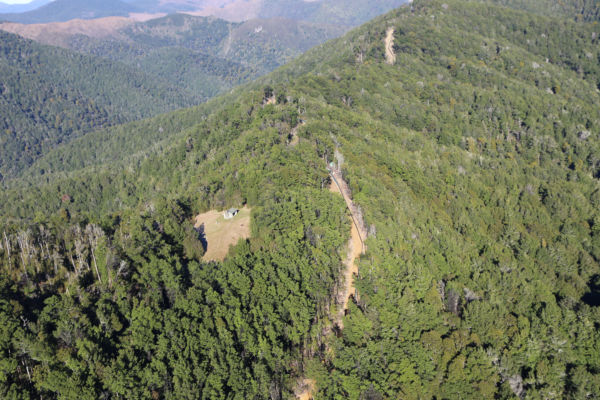
While there are predators outside the fence, sanctuary connectivity to the wider environment has mixed benefits for the species inside.
“At present, there is mixed evidence for the benefits of connectivity to ecosanctuaries. The abundance of most rare endemic bird species within fenced ecosanctuaries increases following fencing, and successful translocations of threatened species have been achieved, suggesting connectivity to net ‘sink’ habitat is not a major problem. However, birds with high natal dispersal or post-translocation dispersal – such as North Island toutouwai – do benefit from reduced connectivity if available high quality habitat also has high predation risk. A dispersal-induced translocation failure has been documented in North Island toutouwai, where toutouwai were observed to disperse from the suitable translocation site to sites on private land, where increased female and chick mortality was higher. The population at the translocation site eventually went extinct.”
Managers deciding where to locate ecosanctuaries need to consider both the ecosystems within and those surrounding the site, and connectivity between the two, say the researchers.
“We recommend that ecosanctuaries that are planned on peninsulas consider the habitat surrounding the ecosanctuary, particularly for weakly gap-limited birds that may rely on habitat outside the fence to supplement that within the ecosanctuary.”
We also need to build habitat resources beyond sanctuary fences and the urban landscape can be part of that process too.
“Landscape-level strategies to restore a full complement of forest birds would require protecting or restoring high-quality, safe habitat patches and connecting them to ecosanctuaries. In agricultural and urban-dominated landscapes, opportunities for restoration are limited; largescale land-use conversion to native forest and other high-quality habitats is unlikely. Ecosanctuaries in these landscapes that seek to be source populations for predator-free habitat around them should focus on increasing habitat quality, such as with hedgerows and urban gardens that contain plants that provide food resources.”
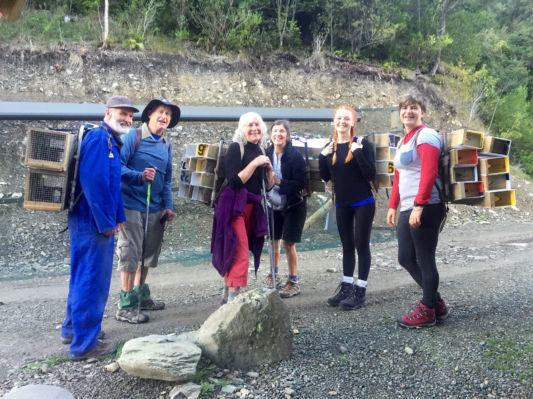
“Restored, planted riparian habitat can increase connectivity, but it is unclear whether strongly gap-limited species will use this habitat, and there will be no effective connectivity – unless riparian strips lead to safe habitat patches. These concerns aside, riparian strips composed of species that provide high-quality food resources will supplement food resources for weakly gap-limited species in the landscape. At a broader spatial scale, situating some fenced ecosanctuaries within, or adjacent to, large tracts of intact native forest would be beneficial and is currently lacking.”
Thinking locally rather than planning for landscape outcomes is an issue currently.
“For the foreseeable future, local interest groups will remain the driving force behind ecosanctuary creation in New Zealand, and they aim to achieve high levels of community involvement with ecosanctuaries, and to expose the public to native biodiversity. However, while these groups interact informally, ecosanctuary sites are not planned to achieve landscape outcomes; a common problem with reserves. The lack of geographic balance of fenced ecosanctuaries indicates the need for centralised planning and intervention in areas where active local community groups do not exist.”
“We suggest that a change in direction to a more systematic approach to future site selection (national scale) is timely for fenced ecosanctuaries, to balance the original, organic origins of many sanctuaries (local scale). A systematic approach would ideally place more ecosanctuaries in large tracts of forest on the south and west coasts of the South Island of New Zealand, although the effects of tree clearance to set up clear fencelines in intact forest needs full consideration. Addressing spatial gaps in ecosanctuaries at a national scale and improving the habitat within buffers around them could create a national network of safe halos around these ecosanctuaries for weakly gap-limited birds, assuming predators can be addressed.”
In summary, the authors conclude:
“Our main finding is that there are low levels of habitat (particularly high-quality habitat) around most of the ecosanctuaries considered in this paper. Thus, assuming major predators can be eliminated, protection of existing habitat, and creation of supplementary habitat in the most appropriate places, should be a top priority. Until that time however, and in other landscapes, connectivity between ‘safe’ and ‘unsafe’ areas of habitat should be treated with caution.”
The full article is published in Biological Conservation and is freely available online:
Assessing the habitat and functional connectivity around fenced ecosanctuaries in New Zealand (2021)

